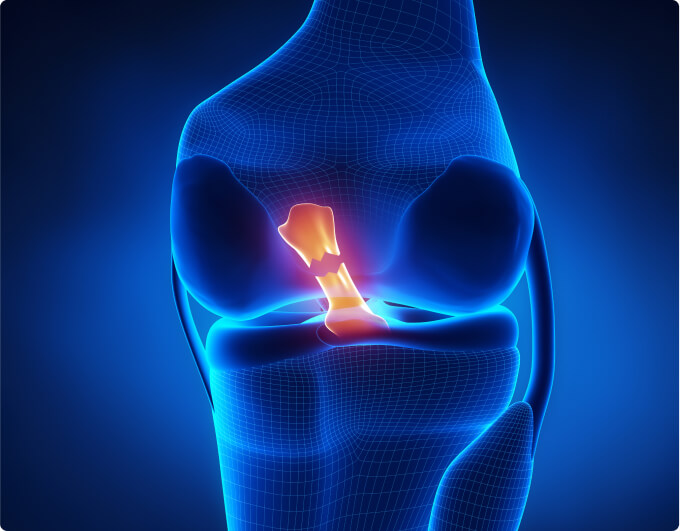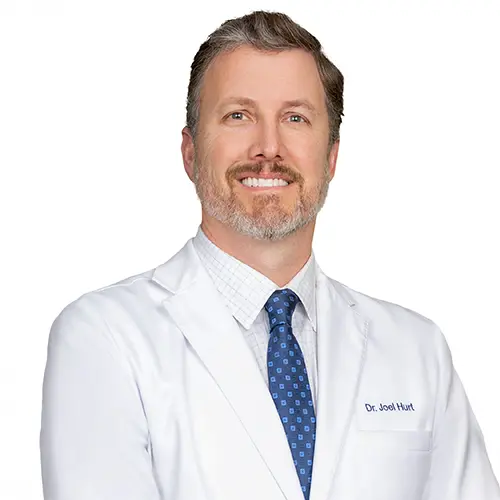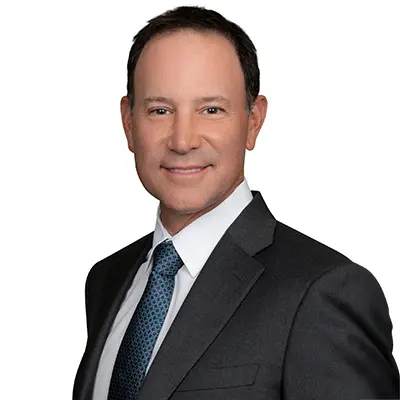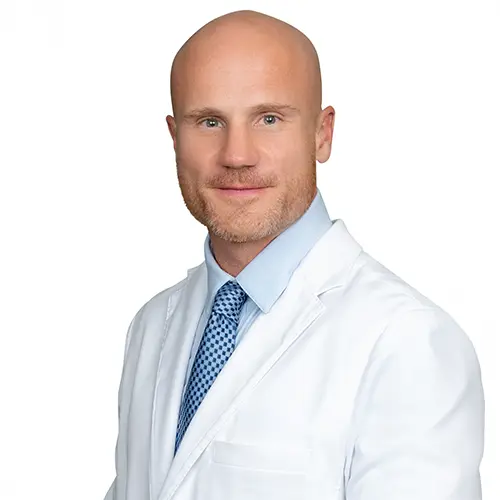Joel Hurt, MD
Board Certified Orthopedic Surgeon
Arthroscopy is a minimally invasive surgery used to diagnose and treat joint problems. It involves your provider making a small incision in the knee and inserting a tube with an attached fiber-optic video camera. This allows your provider to better visualize your knee joints. Arthroscopy is considered a minor surgery and leaves minimal scarring.
An ACL tear generally has a few telltale signs, including:
If you suspect an ACL tear, do not ignore it. Missing an ACL tear can lead to more damage over time. Our providers can expertly assess the damage and recommend a solution that restores your knee to full function.

A torn ACL is among the most common sports injuries. Up to 200,000 Americans suffer a serious anterior cruciate ligament (ACL) injury every year. To return to your sport or other activity safely and avoid a high risk of reinjury, ACL surgery is the gold standard solution.
Most ACL injuries happen during athletic activity. Often, the tear happens when you try to move aggressively to either side, when you land badly from a jump, or when something (or someone) hits your knee from the side.
Pivoting moves like those in basketball can cause an ACL tear. You can also tear your ACL outside of sports, for example, when you experience a bad fall.
Complete ACL tears don’t heal themselves, and in most cases cannot be repaired. Rather, they must be reconstructed with surgery.
After an ACL injury, swelling typically goes down within 2-3 weeks. Though this allows you to continue your normal, daily activities without limping, it’s still important to get treatment because your ACL is still torn.
A torn ACL is unstable during sports, which means you will not be able to perform certain movements, including cutting side-to-side, pivot, or land from a jump normally. Therefore, you’re more likely to fall, causing a fresh round of severe pain and knee problems. This may also worsen the injury further.

At Austin Orthopedic Institute, our providers perform ACL reconstructive surgery using techniques that allow your ligament to be placed according to your own unique anatomy. This helps ensure that your knee not only feels stable after surgery, but has full range of motion. A poorly placed graft can fail to improve your stability during sports and can also result in difficulty achieving full extension and flexion.
Many patients attribute their struggles post-operatively on insufficient therapy, when in fact their surgery was never done correctly in the first place. During surgery, your provider will skillfully reconstruct your ACL using a donor tendon from your own body, or with an allograft (donor tissue from a cadaver) in a certain subset of patients.
Typical recovery from ACL surgery looks like the following: immediate weight bearing, limp resolves in 2-4 weeks, begin strengthening at 6 weeks, begin running at three months, and return to sports at nine months (provided that you work to regain strength and endurance).
The meniscus is a U-shaped, flexible, fibro-cartilage structure in your knee that helps cushion against the large forces present there. Each knee has a pair of menisci cushioning the inner half (medial) and outer half (lateral) of the joint. Decades ago, orthopedic surgeons thought that the meniscus wasn’t that important – they frequently removed them without much concern. What we learned is that they are, in fact, critical to helping prevent arthritis, as well as adding stability to the knee. They are not to be taken for granted.
Meniscus tears are an incredibly common cause for knee pain, though not all meniscus tears are the same. Some tears require a simple arthroscopic surgery to cut the torn portion out (because repair is not possible), some require repair, and others should not be treated surgically at all and are bound to fail if you try. The providers at AOI can help you figure out which option is best for you.
Signs of a meniscus tear typically include sharp joint line pain with touch, catching, locking, swelling, decreased range of motion, instability, and pain especially with planting and twisting. In older patients who may have arthritis, it can be difficult to distinguish between arthritis and a meniscus tear since the symptoms can be very similar.
Meniscus tears cannot be visualized on X-ray. Only a quality MRI scan can definitively diagnose a meniscus tear.
ACL tears are by far the most commonly surgically repaired ligament in the knee. However, they don’t always happen in isolation. Other common tears that can require surgery include:
Not all ligaments are created equally and certainly surgical repair varies for each. The doctors at Austin Orthopedic Institute have experience in treating all of these – not only can your provider diagnose the injuries correctly, but they can also help you decide if you even require surgery – many times you don’t. Rest assured, though, that should surgery be required your doctor has the training and experience required.
Your patella is a bone that floats inside a tendon between your quadriceps and patellar tendon. When you bend your knee, it tracks inside a V-shaped groove in your femur. Sometimes the patella can dislocate painfully out of this groove – this is known as a patella dislocation. It can happen very quickly, followed by popping back in by itself, but sometimes it remains out and is visible as an abnormal bump on the outside half of your knee (until it gets pushed back in).
Patella dislocations can be caused by a fall, twisting injury, or direct blow to the knee. When your patella dislocates, the MPFL (medial patellofemoral ligament) is torn at the same time. This ligament can heal but rarely does so while regaining strength, leading to recurrent patella instability in many patients.
That said, about 66% of patella dislocations will be one time events and so most do not require surgery. Your AOI provider can help you decide what is right for you.
If surgery is required, then usually a reconstruction of the MPFL is performed using a new ligament (similar to ACL surgery) so that a new tether is created. Sometimes, even more than a new ligament is needed to stop recurrence. Other times, cartilage on the backside of the knee cap may be damaged and require surgical intervention as well.

Board Certified Orthopedic Surgeon

Board Certified Orthopedic Surgeon

Board Certified Orthopedic Surgeon

Board Certified Orthopedic Surgeon

January 10, 2022

Austin Orthopedic Institute Specialty